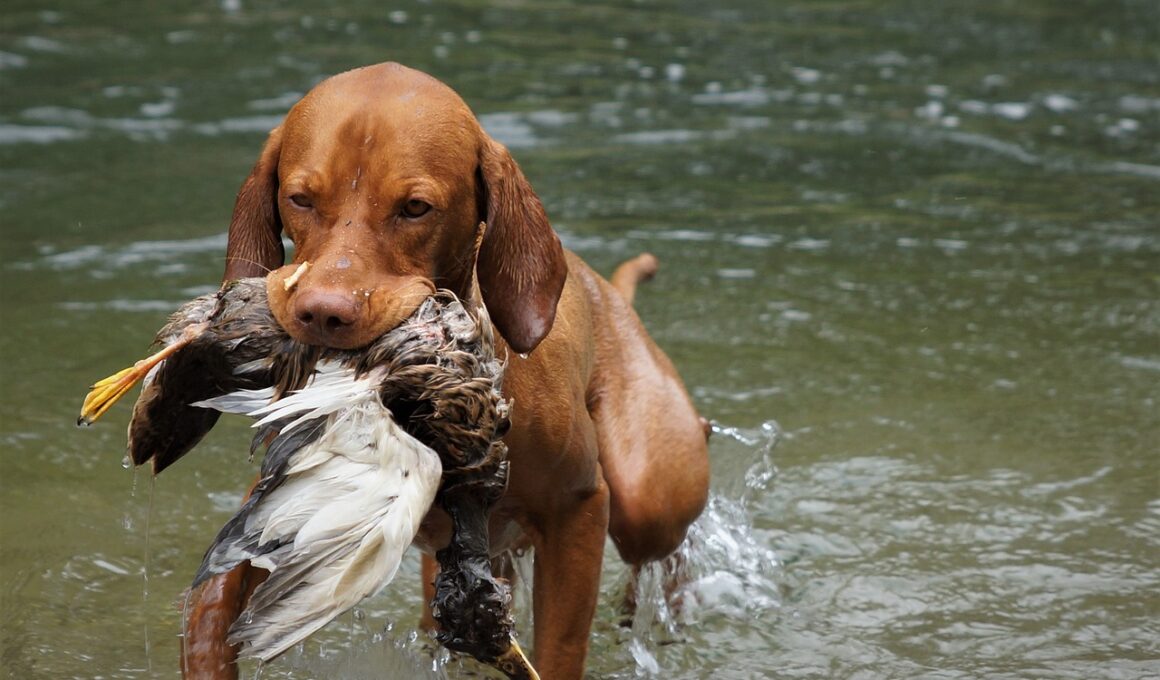The Role of Drive in Successful Schutzhund Dogs
Schutzhund training is a demanding yet rewarding sport that hones a dog’s physical and mental abilities. Central to this training is the concept of drive, which refers to a dog’s innate motivation to perform tasks. A dog’s drive plays a crucial role during Schutzhund trials, where obedience, tracking, and protection are essential elements. Understanding the various types of drive—such as prey drive, defense drive, and play drive—helps in tailoring a training regimen that maximizes each dog’s strengths. For instance, dogs with high prey drive are often more driven to chase and retrieve. In contrast, those with strong defense drive excel in protection exercises. The key is to nurture these drives through positive reinforcement, ensuring that the training is both fun and motivating. Consistent practice alongside keen observation will reveal which drive is most prominent in your dog, allowing you to use it as a foundation for developing skills. Schutzhund training ultimately showcases the exceptional bond between handler and dog, emphasizing teamwork and communication, which are vital in achieving success.
Ensuring a balanced approach to drive is essential in Schutzhund training. This entails recognizing the significance of mental stimulation alongside physical activity. Dogs that are motivated by their drives tend to perform better when they are mentally engaged. Utilizing various games and exercises can significantly amplify a dog’s desire to participate and achieve success. For instance, incorporating items such as tug toys can enhance your dog’s play drive while fostering a strong bond between you. Through this, the dog will associate training with enjoyable experiences. Keep in mind that dogs thrive on routine, so establishing a consistent training schedule will help instill discipline. Always assess your dog’s mood and willingness to engage; this can guide you in sharpening their drive effectively. Engage with your dog regularly while meeting their exercise needs—both physical and mental. Create opportunities for social interaction with other dogs, as this broadens their experience and understanding. When handlers focus on fulfilling their dogs’ drives within training contexts, it can lead to improvements in performance, confidence, and overall enjoyment of Schutzhund activities.
Types of Drive in Schutzhund
During Schutzhund training, various types of drive—prey, play, and defense—are foundational for a dog’s success. Prey drive, characterized by a dog’s instinct to chase and capture, plays a crucial role, especially in tracking exercises. Utilizing this drive through scent work or tracking games can significantly enhance a dog’s focus and excitement during training. Similarly, play drive engages dogs through playful interactions with handlers, making the overall experience rewarding. This can be leveraged during training sessions by incorporating toys and activities they love. On the other hand, defense drive involves a dog’s instinct to protect its handler or territory. Training that taps into this instinct is vital for developing a dog’s protective capabilities, which shine during Schutzhund trials. Handlers must be aware of their dog’s primary drive type, as understanding this allows practical training adjustments. Some dogs may demonstrate a blend of different drives, and recognizing which are predominant can greatly improve training efficiency. By fostering these drives with positive reinforcement tactics, handlers will likely see a better transformation in their Schutzhund dog’s abilities.
One of the primary goals in Schutzhund training is to channel the dog’s energy in a constructive way. This involves setting clear goals and maintaining focus during each training session. It’s important to reinforce desired behavior, bridging the connection between the dog’s drive and successful execution of tasks. Utilizing commands along with hand signals can enhance communication, making it easier for the dog to understand expectations. Additionally, setting realistic expectations based on the dog’s drive level is vital. Training sessions should be kept short and engaging to maintain interest and facilitate learning. High-energy dogs may benefit from activities that allow them to expend energy before training, thereby improving focus. Always remember that every dog is unique, and their responses will vary based on individual drives and temperaments. Adapting techniques based on these factors will yield the best results. Moreover, it is essential to be patient and consistent. Progress comes with time, and recognizing small achievements can significantly motivate both the handler and the dog throughout the training journey, fostering a positive and fulfilling atmosphere.
Positive Reinforcement and Motivation
Positive reinforcement is the cornerstone of effective Schutzhund training. Providing rewards that are meaningful to the dog enhances their motivation and promotes continued engagement. This can include treats, toys, or praise, making the training experience enjoyable and rewarding. By establishing a solid relationship founded on trust and respect, handlers will find that their dogs are more willing to work, which is especially beneficial given the challenges of Schutzhund training. Additionally, handlers should aim to maintain a balance between correction and positive reinforcement. Using correction effectively can help redirect undesirable behavior, yet it should be employed with caution to avoid diminishing the dog’s enthusiasm. Always follow up corrections with praise when the dog exhibits the desired behavior. Training methods that stimulate a pup’s drive through effective motivation will lead to better performance during trials. Moreover, varying rewards keeps the training dynamic and engaging. Continually assess what resonates most with your dog. This deep understanding will allow handlers to harness their dog’s natural drives, ultimately ensuring a transformed and competent participant in Schutzhund events.
Incorporating socialization techniques alongside drive training can significantly enhance the overall effectiveness of Schutzhund preparation. Socialization helps dogs develop confidence and adaptability in various environments, which positively impacts their performance. Engage your dog with diverse individuals, other dogs, and different environments to broaden their experiences. Organizing field trips to different locations while engaging in reward-based activities introduces controlled distractions that can enhance your dog’s focus. Additionally, introduce your dog to various Schutzhund clubs or training groups, allowing them to observe and interact with other dogs involved in training. This exposure will help them become more accustomed to potential competition scenarios. While strengthening drive is essential, it should be coupled with proper socialization strategies. This ensures that the dog remains balanced and capable of handling the dynamics of trials. Moreover, incorporating group training sessions can amplify motivation levels due to the dog’s desire to perform in front of peers. Remember to prioritize safety and comfort during these interactions, ensuring a positive environment that nurtures the dog’s abilities and enthusiasm.
Conclusion: The Importance of Drive
Drive is a fundamental element that shapes the success of Schutzhund dogs and their handlers. By understanding the unique drives of each dog, handlers can create tailored training programs that foster growth and improvement. With patience and consistency, achieving a well-trained Schutzhund dog is attainable. It is imperative to remain adaptable to the dog’s needs and embrace the journey, as every dog learns at their own pace. Continuous engagement through varied activities prevents monotony and keeps dogs active participants in the training process. Handlers should also remain committed to building a strong bond based on trust and understanding, which naturally enhances performance. As with any skill, practicing regularly and analyzing progress can lead to better outcomes. Celebrate your household companion’s milestones, and remember that even minor improvements matter. Ultimately, a handler’s comprehensive approach—incorporating drive recognition, positive reinforcement, socialization strategies, and adaptable training techniques—will be the foundation for successful Schutzhund partnership, ensuring both handler and dog enjoy and excel at this gratifying sport.
As you embark on the Schutzhund training journey, embrace the various aspects of your dog’s drive. The ultimate aim is to cultivate an incredibly rewarding relationship, filled with success and joy in the sport. Always prioritize the well-being and comfort of your dog during training, for this will translate into a happier, healthier dog. Establishing a training routine that is both flexible and progressive allows for personal growth and development. This will ensure that the time you invest yields positive results for you and your dog. Remember, mastering Schutzhund takes time, dedication, and mutual respect. Celebrate every pocket of progress, and learn to adapt your training as needed, keeping both the handler and dog interested and motivated. Over time, you will observe the depth of your dog’s potential, as well as pearls of wisdom gained along the way. Enhance your tools by observing renowned trainers and participating in workshops that reinforce your knowledge. The love for sport paired with a willingness to learn can elevate your skill set, ensuring a fulfilling Schutzhund experience filled with excitement and achievement.


